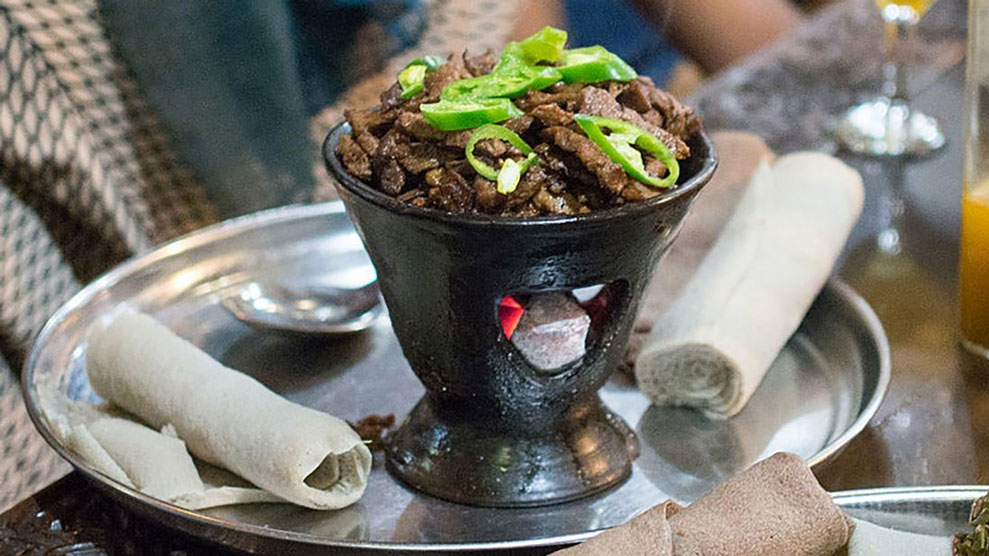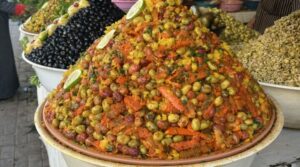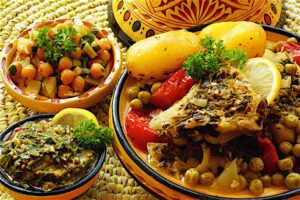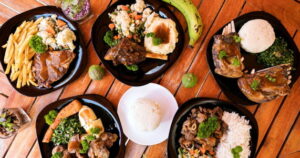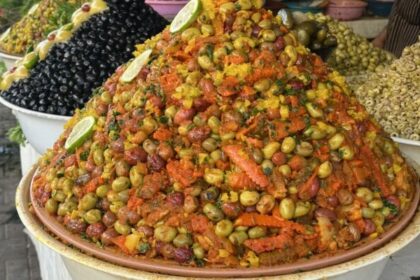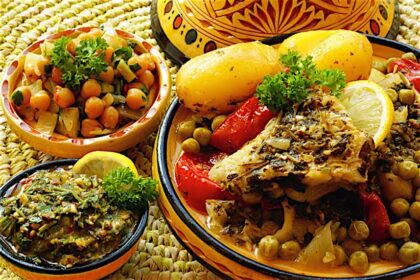Table of Contents
Ethiopia boasts one of the world’s most unique, flavorful, and culturally rich cuisines. From the quintessential injera flatbread to the fiery stews and aromatic coffee ceremonies, Ethiopian food offers an unforgettable culinary adventure.
This guide explores the top foods and drinks to sample when visiting Ethiopia, highlighting favorites like kitfo raw beef, berbere-seasoned tibs meat dishes, warming shiro chickpea stew, and honey-infused tej mead.
It provides an overview of each item’s flavor, ingredients, cultural significance, and potential pros and cons.
SUMMARY
1. Injera
2. Tibs
3. Shiro
4. Coffee
5. Kitfo
6. Tej
Overview of Best food and drink to try in Ethiopia (and why)
How to Choose Best food and drink to try in Ethiopia (and why)
Pros & Cons of Best food and drink to try in Ethiopia (and why)
What to Watch Out
Pro Tips
Recap
1. Injera
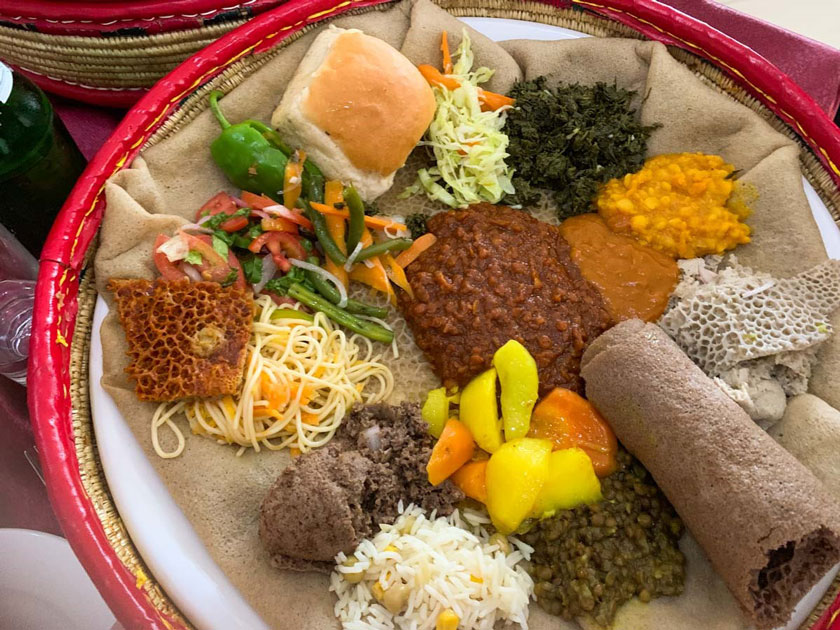
The heart of Ethiopian cuisine, injera takes center stage as the nation’s main staple. This ubiquitous pancake graces tables across Ethiopia, serving as a versatile base for various flavorful toppings.
The finest injeras typically showcase a pale beige hue, though you may encounter variations in shades of brown or grey. Darker injeras often indicate lower quality and may employ tef substitutes such as barley or buckwheat.
- Provides beneficial nutrients. It contains protein, carbohydrates, and minerals like calcium, iron, and zinc.
- Offers a unique texture and taste. Its sourdough spongy texture and slightly tangy teff flavor stands out.
- Serves as the base for Ethiopian dishes. It is used to scoop up flavorful stews and sauces in Ethiopian cuisine.
- Allows you to appreciate Ethiopian food culture.
- Contains antinutrients. The teff flour in injera contains compounds that inhibit nutrient absorption.
- Irritated digestive systems. Its unique texture and fermentation may cause bloating or discomfort for some.
- Poses availability challenges abroad. Finding properly fermented and spongy injera can be difficult outside Ethiopian restaurants.
- Goes bad quickly. Its porous texture makes it prone to spoiling and molding within days.
Much like bread in Europe or rice in Asia, injera is an integral part of every meal.
Originally from tef, an indigenous Ethiopian cereal, injera may offer a unique tasting experience for you.
Its flavor profile can range from tangy and slightly bitter to even slightly sour. However, with a few more mouthfuls or a dip in piquant red berbere powder, you might discover its delightful allure.
PRO TIPS >>> Africa Tourism – Best Hotels to Stay in Ethiopia
2. Tibs
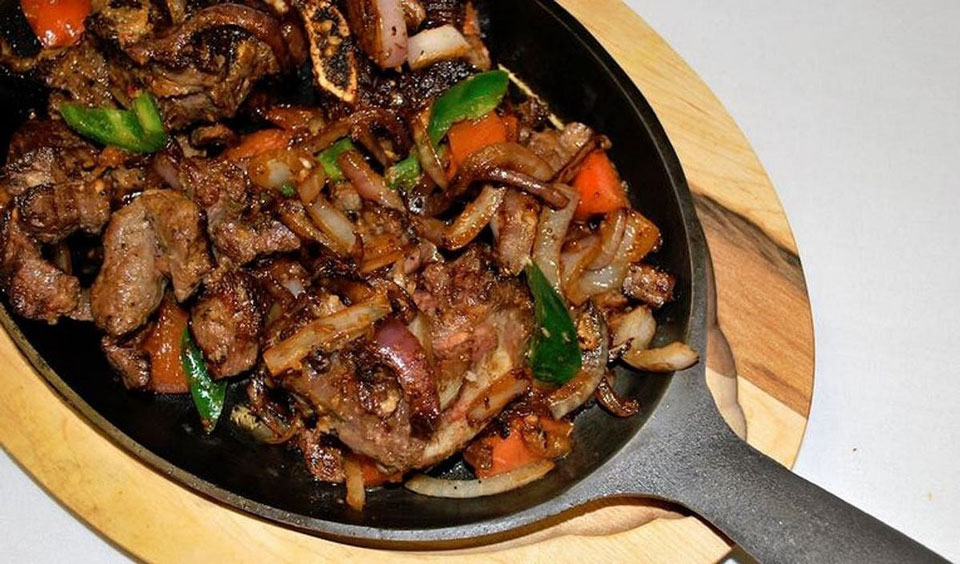
Tibs, a lovely dish in Ethiopian cuisine, is a delightful medley of sautéed meat and a burst of flavors. Typically, it sizzles to perfection on a hot plate, with the aromatic blend of spices and herbs that define Ethiopian cooking.
While tibs holds its own on the culinary stage, it also plays a vital role in Ethiopian celebrations and traditions.
It seasons with berbere, a blend of spices including chilies, garlic, ginger, basil, korarima (Ethiopian cardamom), rue, ajwain, and more. This gives tibs a robust, aromatic and often spicy flavor.
- Provides a high amount of protein.
- Offers flavorful seasonings like garlic, onions, berbere, and other spices.
- Comes with injera that soaks up the flavorful sauces and juices.
- Allows one to experience and appreciate Ethiopian cuisine and culture.
- Contains high amounts of fat if made with fatty cuts of meat and cooked in oil or butter.
- Has spices that make it too spicy and intense.
- Eat undercooked tibs risks foodborne illness from raw meat.
- Experience difficulty in finding authentic tibs poses difficulty outside Ethiopian restaurants depending on one’s location.
- Order tibs at restaurants and pay more because of the expensive high-quality meat used.
Tibs comes in a delightful array of variations. The distinction lies in the type of meat used, the cut and size of the meat pieces, and the accompaniments including, kitfo tibs, shekla tibs, siga tibs, yefigel tibs, yedoro tibs, and awake tibs.
3. Shiro
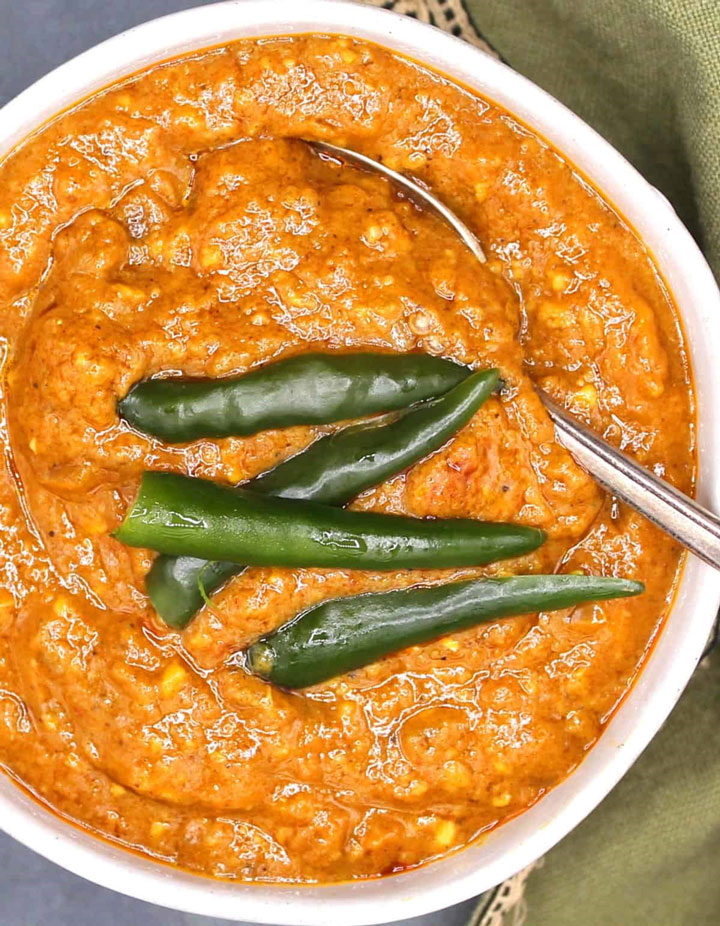
Shiro stands out as a star among Ethiopian dishes, especially if you’re a vegetarian and vegan. Its appeal lies in its vibrant and spicy flavors, making it a personal favorite among Ethiopian foods. Moreover, Shiro holds significance during periods of fasting, such as Lent and Ramadan.
While inherently a vegan dish, Shiro also offers non-vegan renditions, featuring spiced butter or meat, aptly named bozena shiro.
Shiro isn’t just about taste; it’s a feast for the senses. Shiro presents itself in thick, mashed-potato-like consistency or as a runny sauce, depending on regional variations.
- Offers vegan delight
- Delivers spicy flavor
- Preserves cultural traditions
- Provides adaptable texture
- Provides protein from chickpeas and fiber from legumes
- Suffer intense spice heat
- Has less availability in some regions
- Has high in carbohydrates from chickpeas and onions
- Causes gas or bloating for those sensitive to legumes.
This delectable concoction takes the form of a thick stew, originating from powdered chickpeas, broad beans, or lentils. Slow-cooked to perfection, it harmoniously blends with the famous berbere powder. For added depth, minced onions, garlic, and regional variations like ground ginger or chopped tomatoes and chili peppers are commonly incorporated.
4. Coffee

While coffee is ubiquitous across the globe, true coffee enthusiasts understand that Ethiopian coffee holds a special place in the world of beverages. Ethiopia is not just any coffee destination; it’s the very birthplace of coffee culture.
Ethiopia stands tall for its offering of some of the world’s most exquisite and invigorating coffee experiences.
- Boosts energy
- Enhances cognitive functions, including concentration and memory.
- Provides antioxidants
- Fosters social interaction
- Creates caffeine dependency
- Disrupts sleep
- Causes digestive issues
- Raises heart rate
- Leads to stains and tooth decay
- Triggers anxiety and jitters
Coffee in Ethiopia is far from ordinary; it’s an enduring tradition. The traditional Ethiopian coffee ceremony, which you can partake in at select restaurants, even in the U.S., underscores the culture’s deep respect for coffee.
The ceremony holds with meticulous care. Served in petite cups with a touch of sugar, it’s a fitting conclusion to a sumptuous Ethiopian meal, a genuine celebration of coffee in its most authentic form.
5. Kitfo
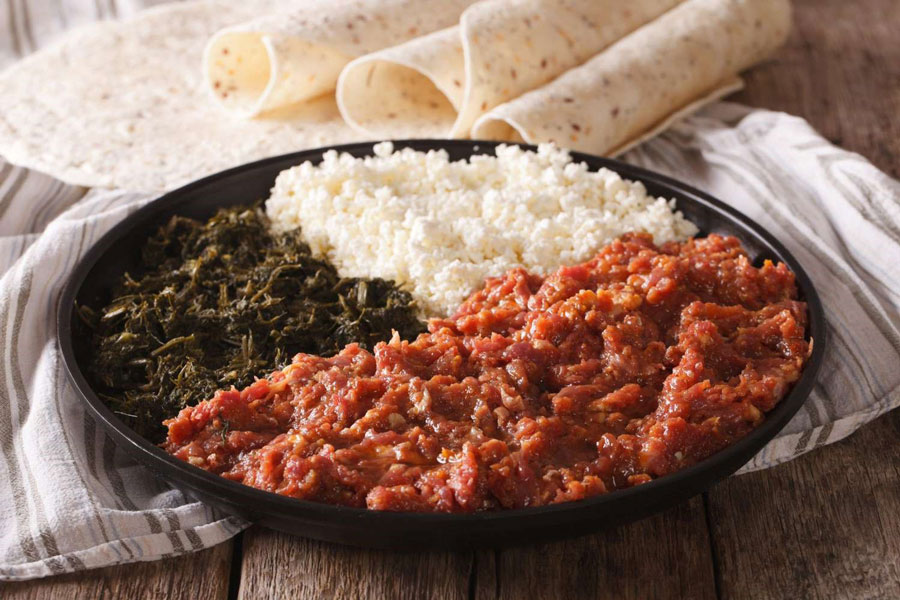
Kitfo is a culinary adventure from minced raw beef, expertly marinated in mitmita, a chili powder-based spice blend, and niter kibbeh, a butter infused with aromatic herbs and spices. The name ‘kitfo’ itself stems from the Ethio-Semitic root “k-t-f,” which aptly translates to “to chop finely.”
Traditionally, Kitfo is given with a mild cheese called ayibe or a side of cooked greens.
- Retains a significant portion of its natural nutrients, including proteins and vitamins, which may be partially lost during cooking processes.
- Reduces reliance on heavily processed foods, as it offers a more natural and unadulterated source of nutrition.
- Necessitates strict attention to sourcing from hygienic and reputable providers.
- Face higher risk of bacterial contamination, with pathogens like Salmonella, E. coli, and Campylobacter being potential culprits
- Encounter paracitic Infections
It’s simply a “raw” meat meal. Kitfo is a culinary journey that combines the unexpected with tradition, making it a fascinating and delectable addition to Ethiopian cuisine.
However, you can request it to be betam leb leb, signifying “very warmed” or cooked, for those who prefer their meat less rare.
6. Te

Tej is an Ethiopian beverage, is a captivating mead or honey wine typically crafted in the comfort of home kitchens. It receives its distinctive flavor from the powdered leaves and twigs of gesho (Rhamnus prinoides), a hops-like bittering agent.
Tej’s unique blend of flavors and cultural significance make it a must-try beverage, offering a taste of Ethiopia’s rich traditions and artisanal craftsmanship.
- Enjoy Tej’s taste is a captivating fusion of honey’s sweetness and the unique bitterness from gesho leaves and twigs, creating an intricate and memorable flavor.
- Try its diverse forms, from the traditional, robust version to the milder and sweeter berz, catering to a wide range of palates.
- Observe potent alcohol content
- Faceless availability in certain areas
- Be careful of high sugar content
While Tej is predominantly a homemade concoction, you’ll encounter “tej houses” built throughout Ethiopia, where you can savor expertly crafted versions of this honeyed elixir.
Tej’s allure lies in its seemingly sweet taste, which cleverly conceals its robust alcohol content. The potency of tej can vary considerably, contingent upon the duration of fermentation.
Overview of Best food and drink to try in Ethiopia (and why)
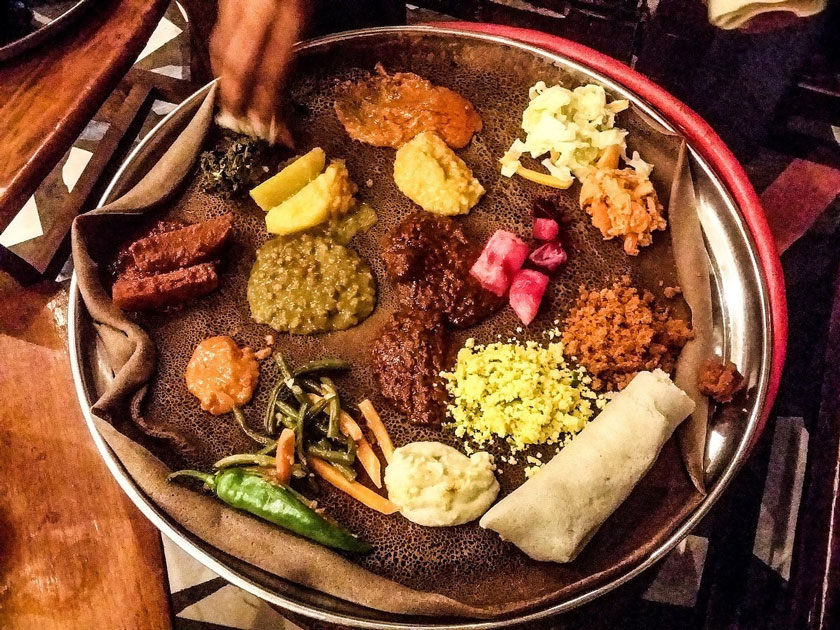
Ethiopian cuisine stands out as one of the world’s most distinctive, captivating, and flavorful culinary experiences. Beyond its delectable dishes, stews, and spices, Ethiopian cuisine boasts a rich cultural tradition of how food is presented and shared among friends and family.
At the heart of Ethiopian cuisine lies a symphony of flavors, blending spices, stews, and curries into a mouthwatering tapestry. What truly distinguishes this cuisine is its unique serving style, with dishes artfully presented atop a sizable, spongy flatbread, injera.
An important cultural note: Ethiopians consider the left hand unclean, so it’s customary to indulge using only the right hand.
Moreover, Ethiopia boasts a rich repertoire of vegetarian and vegan offerings, driven by religious dietary practices that eschew certain foods. When it comes to meat, rest assured it will be impeccably fresh.
In Ethiopia, meals are cherished communal affairs, fostering connection and shared enjoyment.
GET SMARTER >>> Best Snorkeling and Diving Trips in Africa
How to Choose Best food and drink to try in Ethiopia (and why)
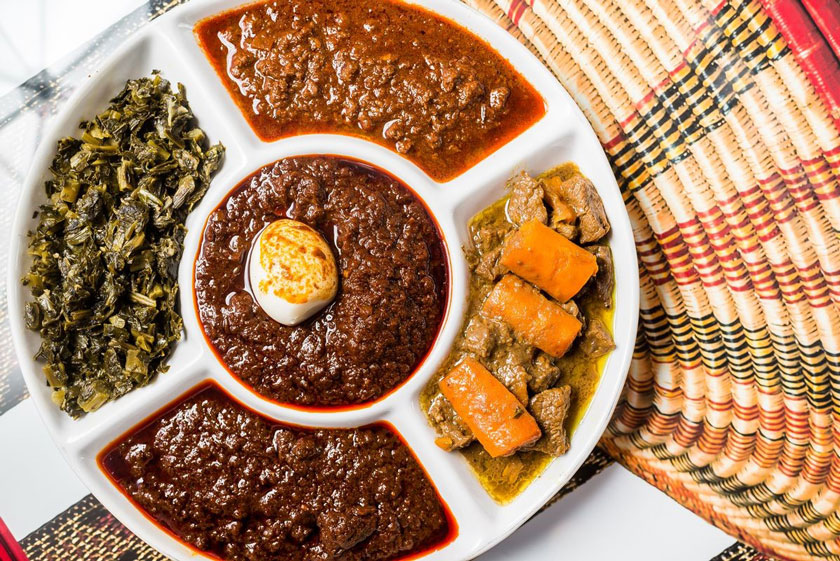
Start by addressing any allergies or specific dietary considerations you may have. Once you’ve taken that precaution, here’s how to make the most of this culinary adventure:
- Embrace the opportunity to explore and savor the local flavors.
- Exercise caution, especially as a foreign visitor. Pay attention to factors like hygiene and the transparency of ingredients.
- Seek recommendations from trustworthy sources. Travel guides often highlight highly-rated food spots and restaurants.
- Read reviews online
- Research the pricing
Pros & Cons of Best food and drink to try in Ethiopia (and why)
Pros
- Savor complex flavors blending aromatic spices, savory stews, and unique textures.
- Engage in interactive dining
- Enjoy vegetarian and vegan options
- Taste fresh ingredients particularly with its emphasis on fresh meat.
Cons
- Struggle with adapting to unique flavors
- Beware of alcohol strength in some drinks
- Exercise hygiene vigilance
- Consider regional variations
What to Watch Out For
Gursha Tradition
In Amharic, “Gursha” translates to “mouthful,” “tip,” or “bribe.” This Ethiopian tradition involves taking a substantial piece of food wrapped in injera and placing it in another person’s mouth at the dining table. Gursha is a gesture of respect and is often initiated for elders or guests, following cultural rules. Embrace this unique and communal aspect of Ethiopian dining culture when invited to partake.
Coffee Ceremony
Coffee drinking in Ethiopia is not just a routine; it’s a social and ceremonial event that symbolizes friendship and hospitality. The coffee ceremony entails several steps, including roasting and grinding beans, brewing in a jebena (a pottery flask), and serving with snacks, commonly fresh popcorn. As incense like myrrh and frankincense is burned to dispel malevolent spirits, guests engage in conversation and savor their coffee. It is considered impolite to leave the ceremony without enjoying at least three cups, as it is believed to uplift the spirit.
Pro Tips
- Request for a thicket Injera if you have preferences
- Participate in the hand washing ritual before and after meals
- Be careful of spices
- Avoid double dipping when eating
- Understand the sauces
Recap
The diverse flavors of Ethiopian cuisine, from the tangy injera flatbread to the spiced meat stews like tibs and kitfo, offer a unique culinary journey. Food highlights include berbere-seasoned dishes, chickpea-based shiro stew, and tej honey wine.
When dining in Ethiopia, be aware of cultural practices like eating only with the right hand. Seek out authentic local restaurants and food stalls for the freshest ingredients. This guide outlines the top iconic foods and drinks to try, along with their origins, ingredients, and potential benefits and drawbacks.





